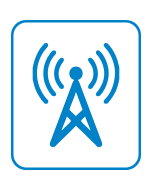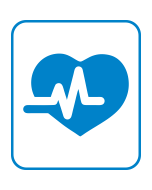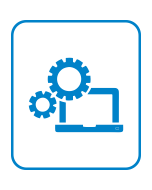Internet of Things Start-up Tracker: Smart Buildings
Internet of Things Start-up Tracker: Smart Buildings
Growth Potential for IoT Solutions that Make Buildings Safer, More Efficient, and Sustainable
31-Aug-2023
Global
Market Research
Frost & Sullivan defines a smart building as one equipped with networked devices that help provide a safe, productive, and comfortable environment for its occupants while optimizing operational and energy performance. Smart building industry participants, including leading, emerging, and start-up companies, innovate to achieve building decarbonization and digitalization and improve occupant well-being.
The product landscape for smart buildings is seeing significant start-up activity in some segments, including energy management, access control and elevators, smart building management, construction management, and fire safety and security. This study surveys the smart building ecosystem and considers factors impacting growth, with a focus on start-ups.
Customer adoption of digital transformation technologies has accelerated in the last few years and is poised to transform the building technology industry, making buildings more connected, sustainable, and cognitive. Intelligent building solutions using digital transformation technologies, including Internet of Things (IoT), artificial intelligence (AI), and machine learning (ML), are advancing building operations and maintenance, moving from reactive to predictive maintenance. IoT has revolutionized the way buildings are managed and operated—smart buildings are more intelligent, energy-efficient, safe, and sustainable with the integration of IoT.
Frost & Sullivan offers this Start-Up Tracker as a resource to help ecosystem participants identify solution providers with offerings that match industry challenges. The tracker provides a rich database of start-up and niche players that have the capabilities to transform processes in smart buildings and add value for end users. To select these companies, Frost & Sullivan uses its best practices database and secondary research on smart building technology ecosystem mappings and rankings worldwide.
The study offers a list of 66 start-ups focused on IoT for smart buildings, displaying company headquarters, founding year, solution offered, and the target end user. Frost & Sullivan conducted detailed primary interviews with start-ups that stand out in different regions to generate a competitive profile and understand relevant developments, strategies, and value propositions. A Frost & Sullivan analyst has screened and analyzed each short-listed company and established an overall score for each start-up based on the criteria described in this study. To qualify as a component of the IoT, any product, application, or service must be part of a larger solution that comprises the following 4 elements.
• Objects that are virtualized and imbued with data measurement capabilities
• The ability to grant identities to physical and virtual objects
• Interconnections between these objects for monitoring and interaction
• The ability to generate real-time insights from data and incorporate them into existing business
processes
The IoT space is still in flux. Unlike more mature information and communications technology (ICT) markets, the IoT space has significant overlap with other industries such as automotive, energy, and transportation. To accurately observe and measure IoT-related economic activity, Frost & Sullivan uses the definition above to determine if a technology product, application, or service is part of the IoT.
Why Is It Increasingly Difficult to Grow?
The Strategic Imperative 8™
The Impact of the Top 3 Strategic Imperatives on the Smart Building Industry
Growth Opportunities Fuel the Growth Pipeline Engine™
The Internet of Things (IoT)
Scope of the Study
Research Process and Methodology
Research Process and Methodology (continued)
Smart Buildings: An Overview
Evolution of Smart Buildings
Smart Building Functionalities
Forecast Assumptions
Global Smart Buildings Industry Revenue
IoT in Smart Buildings
Highlights of 2022
Trends in the Smart Building Market
Predictions
Predictions (continued)
Types of Buildings
Market Segmentation
Energy Management
Energy Management: IoT in Low-voltage Power Distribution
Energy Management: IoT in IAQ
Energy Management: HVAC
Energy Management: Transforming Technologies in HVAC Systems
Energy Management: IoT in HVAC Devices and Applications
Energy Management: Lighting
Energy Management: IoT in Lighting
Access Control and Elevators
Access Control and Elevators: IoT in Access Control
Access Control and Elevators: IoT in Elevators
Smart Building Management
Smart Building Management (continued)
Smart Building Management: BAS
Smart Building Management: IoT in BAS—Applications and Devices
Smart Building Management: IoT in BEMS
Fire Safety and Security
Fire Safety and Security: IoT in Electronic Security
Fire Safety and Security: IoT in Fire Safety
Construction Management
Construction Management (continued)
Construction Management: Digital Twins
Construction Management: IoT in Construction Management Software
Construction Management: IoT in Building Information Modeling
IoT Smart Buildings Start-ups
IoT Smart Buildings Start-ups (continued)
IoT Smart Buildings Start-ups (continued)
IoT Smart Buildings Start-ups (continued)
IoT Smart Buildings Start-ups (continued)
IoT Smart Buildings Start-ups (continued)
IoT Smart Buildings Start-ups (continued)
IoT Smart Buildings Start-ups (continued)
Scoring Methodology for Competitive Profiles
Innovation Target for Competitive Profiles
Kontakt.io
Kontakt.io (continued)
Metrikus
Metrikus (continued)
Kognition
Kognition (continued)
Metron
Metron (continued)
Growth Opportunity 1: Advanced IoT Solutions for Sustainable Innovation
Growth Opportunity 1: Advanced IoT Solutions for Sustainable Innovation (continued)
Growth Opportunity 2: Digital Twinning
Growth Opportunity 2: Digital Twinning (continued)
Growth Opportunity 3: Enhanced IoT Devices and Digital Twins for Smart Warehouses
Growth Opportunity 3: Enhanced IoT Devices and Digital Twins for Smart Warehouses (continued)
Growth Opportunity 4: Enhanced IoT Devices for Smart Data Centers
Growth Opportunity 4: Enhanced IoT Devices for Smart Data Centers (continued)
Growth Opportunity 5: Advanced IoT Solutions for Smart Hospitals
Growth Opportunity 5: Advanced IoT Solutions for Smart Hospitals (continued)
Growth Opportunity 6: Strategic Partnerships
Growth Opportunity 6: Strategic Partnerships (continued)
Growth Opportunity 7: Niche Markets
Growth Opportunity 7: Niche Markets (continued)
List of Exhibits
Legal Disclaimer
Purchase includes:
- Report download
- Growth Dialog™ with our experts
Growth Dialog™
A tailored session with you where we identify the:- Strategic Imperatives
- Growth Opportunities
- Best Practices
- Companies to Action
Impacting your company's future growth potential.
| Deliverable Type | Market Research |
|---|---|
| Author | Constanza Ingaramo |
| Industries | Information Technology |
| No Index | No |
| Is Prebook | No |
| Keyword 1 | Smart Building Iot |
| Keyword 2 | Smart Building Monitoring System |
| Keyword 3 | Iot Building Management |
| Podcast | No |
| WIP Number | K918-01-00-00-00 |



